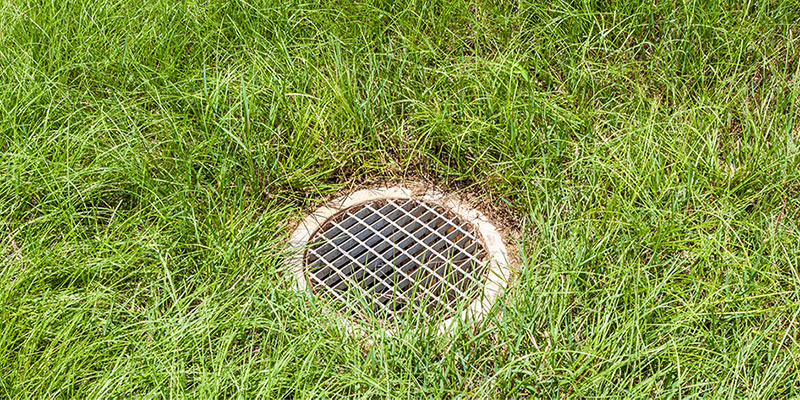
There are a few reasons why you might need overground or underground drainage in your garden – you may have underground springs, or surface water from higher elevations, draining into your garden. You may find that rain pools on the surface for several hours, or that all or part of your lawn is permanently waterlogged.
Whatever your reasons, sometimes what you need to do is aerate the lawn, especially if the soil has become compacted and doesn’t drain as it should. All you need to do is to break up the soil and maybe add some fine gravel or sand to it. However, some gardens have problems that will need specialist treatment.
Spring water or run-off
This will definitely need a drainage system that collects the water and diverts it into a sump or into a rainwater drainpipe. Very often you’ll find that underground plastic pipes combined with a network of underground gravel will work well. A system like this takes two or three days to install, but it’s long-lasting and very effective very quickly – you’ll notice the difference within a week.
If you have one or two problem areas in your garden, then there are other solutions.
Localised puddling
This is when rain collects in puddles on your lawn and stays for more than a couple of hours. This is most likely caused by compacted soil or clay, so you can break up the ground with a garden fork and, if necessary, mix in gravel or coarse sand. If your soil is very clayey, you may need to add mulch or other organic material as well.
A permanently soggy area
You can usually sort this out by creating a soak-away area. This can be up to a metre deep if necessary, or for larger soggy areas, it can be a long trench at least 18 inches across and as deep as possible. The hole needs to be filled halfway up with rubble, topped with up to 30cm of gravel and then finished with 15cm of topsoil. If your soil is loamy, use it on your flowerbeds; if it’s clay, just get rid of it!
Slight dips that retain water
If your lawn is generally OK drainage-wise but it has a few dips that catch water when it rains, then mark out the depressions and when the lawn is dry, fork these areas over and mix in some coarse sand. You may need to do this a few times, and you must also be careful not to completely cover the grass – make sure you can see the top parts of the blades.
Create a bog garden
If there’s a really stubborn area in your garden that resists all the usual methods, then you can always just give in and create a bog garden! Plant bog-loving flowers and plants to make the best of it and also to create a varied habitat for wildlife. Bog gardens make a great alternative to ponds, which is handy if you have small children around.
